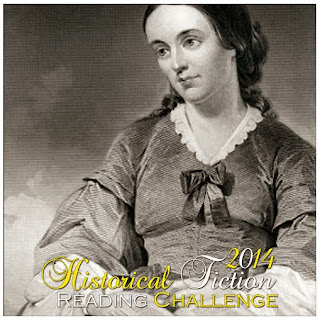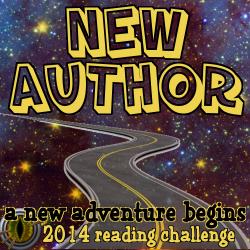
Paperback, 352 pgs.
I am an Amazon Affiliate
Where Do You Hang Your Hammock? by Bella Mahaya Carter is a book focused on not letting rejection and negative thoughts get in the way of your dreams. Carter’s book guides writers through the doubts, negative thoughts, roadblocks, and obstacles of writing and publishing, helping them review their own perspectives and how to change their mindsets.
She begins by talking about her hammock where she daydreamed and thought about her writing, but one day, her neighbor cuts the shade tree down in his yard and the hammock is now not “perfect.” Carter’s thoughts are consumed by the loss of shade and the bright sun, but her husband suggests she moves the hammock to another spot. She’s unwilling to do that, until she realizes that sometimes obstacles pop up when we need to change direction.
“I had traded the powerful peace that I am for the illusion that somebody had taken it,” she says. “You may think, as I did, that someone or something outside you is responsible for your upset. As convincing as this appears, it’s a misconception. Our peace and happiness come from within.”
Our internal demons and thoughts are those that keep us from reaching our dreams, and she urges us to stop being rats on that spinning wheel and get off. We need to release ourselves from the “cage of our own making.” In order to do this, however, you need to know wholeheartedly what you want, especially from your writing. You need to have a clear vision of the writing and its purpose. Without it, agents and external forces can push you in directions that are not a perfect fit for you. While some may provide additional opportunities that you may want to pursue, other opportunities may not be a right fit. The trick is to have a clear vision at the start to recognize those right opportunities.
“We cannot control outside circumstances or thoughts, we can choose how we relate to them.”
Carter does offer some writing advice, but her book is less about craft itself and more about the mindset you need to create freely. She does offer a great deal of insight about choosing agents and publishers and learning what route is best for your writing. Where Do You Hang Your Hammock? by Bella Mahaya Carter is part spiritual journey, part publishing advice, and part writing craft advice.
RATING: Cinquain
About the Author:
Bella Mahaya Carter is a creative writing teacher, empowerment coach, speaker, and author of an award-winning memoir, Raw: My Journey from Anxiety to Joy, and a collection of narrative poems. She has worked with hundreds of writers since 2008 and has degrees in literature, film, and spiritual psychology. Her poetry, essays, fiction, and interviews have appeared in Mind, Body, Green; The Sun; Lilith; Fearless Soul; Writer’s Bone; Women Writers, Women’s Books; Chic Vegan; Bad Yogi Magazine; Jane Friedman’s blog; Pick The Brain; the Spiritual Medial Blog; Literary Mama, several anthologies’ and elsewhere.






 Mine? Well, it’s lovely. A room of my very own, as ordered by Virginia. It was about 25 years ago when my wife Gloria and I moved into the house in San Francisco that we rent from her Aunt Rose, our Godmother. Because we needed space for guests and she didn’t mind, Gloria’s room-of-her-own occasionally doubles as the guest room. And because I am a restless writer—much given to getting up and walking around, making tea, etc.—I preferred the first-floor room in the front.
Mine? Well, it’s lovely. A room of my very own, as ordered by Virginia. It was about 25 years ago when my wife Gloria and I moved into the house in San Francisco that we rent from her Aunt Rose, our Godmother. Because we needed space for guests and she didn’t mind, Gloria’s room-of-her-own occasionally doubles as the guest room. And because I am a restless writer—much given to getting up and walking around, making tea, etc.—I preferred the first-floor room in the front. heard of, and she invited us to her house, which is filled with her own beautiful artwork. What a thrill to see that! And then she allowed us each to choose a drawing. Right below Florence’s piece are a photo of a dear departed friend and a framed Christmas card of Central Park West in snow, shot by my old friend Chuck. Next to that, and placed so I look at it all the time is a gorgeous watercolor by another friend, the artist John Zurier, whose career is flourishing. It was painted in Iceland on one of his first trips there. If you don’t know John’s work, do look him up!
heard of, and she invited us to her house, which is filled with her own beautiful artwork. What a thrill to see that! And then she allowed us each to choose a drawing. Right below Florence’s piece are a photo of a dear departed friend and a framed Christmas card of Central Park West in snow, shot by my old friend Chuck. Next to that, and placed so I look at it all the time is a gorgeous watercolor by another friend, the artist John Zurier, whose career is flourishing. It was painted in Iceland on one of his first trips there. If you don’t know John’s work, do look him up! On the opposite wall is one of my proudest possessions, the walking stick given to all graduates of the Warren Wilson College MFA Program for Writers. It’s handmade in Asheville, NC from native rhododendron to always keep us connected to the mountains. Warren Wilson is the reason I have a novel to share with the world, and the community of writers it has created keeps me going year after year.
On the opposite wall is one of my proudest possessions, the walking stick given to all graduates of the Warren Wilson College MFA Program for Writers. It’s handmade in Asheville, NC from native rhododendron to always keep us connected to the mountains. Warren Wilson is the reason I have a novel to share with the world, and the community of writers it has created keeps me going year after year.

 About the Author:
About the Author:


















